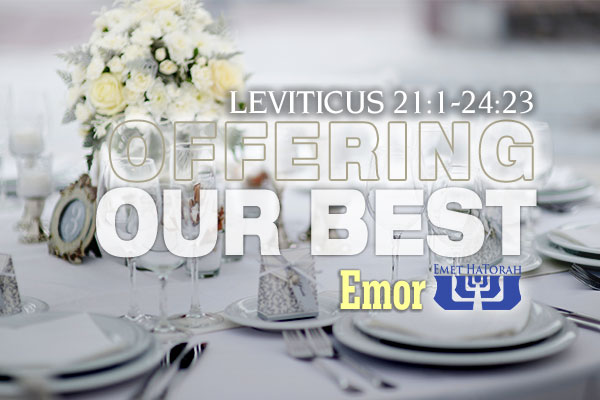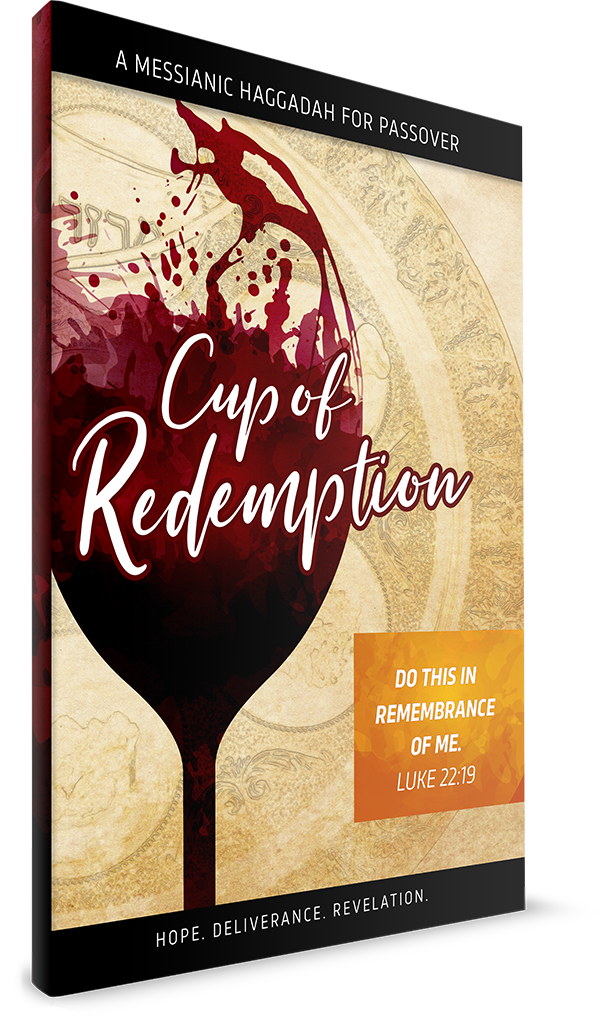Parashat Emor - Leviticus 21:1-24:23
Series:

Offering Our Best
Parashat Emor is a continuation of Parashat Kedoshim in that it resumes outlining the parameters of holiness, but this time it is directed toward the priestly service. Chapter twenty-two begins to detail the laws pertaining to voluntary offerings. In this section we have a few interesting laws describing restrictions for these sacrifices. And although they are specifically in regard to voluntary or freewill offerings, the principles are applied to any and all offerings. The first principle is that an unfit animal may not be used as a sacrifice. Since we do not have a functioning Beit Hamikdash today, this principle can often be lost in a modern context, even though one may have an understanding of this law in theory. Let’s explore this principle.
In times when the Holy Temple is functioning the supplicant was required to bring the very best of his herd or flock as his offering. He may not bring an animal that is blemished:
If it is to be accepted for you it shall be a male without blemish, of the bulls or the sheep or the goats. You shall not offer anything that has a blemish, for it will not be acceptable for you. And when anyone offers a sacrifice of peace offerings to the LORD to fulfill a vow or as a freewill offering from the herd or from the flock, to be accepted it must be perfect; there shall be no blemish in it. (Leviticus 22:19–21)
In order for one’s animal gift to be acceptable to the LORD, it may not have any kind of blemish. It may not be blind, have a broken bone, a split eyelid, warts, sores, a limb that is too short or too long, or a disorder that causes its hooves to not be completely split. This may not seem like a big deal, but from an economic standpoint this can appear to be counter productive. This meant giving up the most healthy, the most valuable, and potentially the most expensive animal of the herd or flock. How can we relate to this today? We can view our observance of the commandments, particularly our celebration of the festivals, in much the same manner. Just as these voluntary offerings are a gift to Hashem, so too are our observances of the festivals, because festivals are an appointment with Hashem.
Here are some questions we can ask ourselves when it comes to how we celebrate the festivals. Do we observe Hashem’s appointed times, including Shabbat, to the very best of our ability, or do we just do the minimum to get by? Is our table set with the very best we have or does it look like the rest of the week? Do we purchase and enjoy the very best foods that we can afford or do our meals look like the other six days of the week? Do we wear our very best clothes or are we still in our shorts and T-shirts? Do we celebrate the festivals with detail, precision, and completeness, or do they look like most other days?
One may object: “The Sabbath is a day of rest and leisure! It should be casual and relaxed!” But is that the true spirit of the Sabbath? Is this the gift we desire to give back to our Master? In both of these situations—offering a sacrifice in the Holy Temple or celebrating a festival in our home—it comes down to the question of whether or not we have made them holy by offering up our best. The final question is, have we given our absolute best offering to Hashem or are we merely handing Him the leftovers? Just as we wouldn’t want to give Him an unfit animal as an offering, we shouldn’t settle for giving Him our second or third best on a day of holiness. Maybe you have been in the habit of keeping a more casual Shabbat, or making the festivals casual. Ask yourself, what can I do to enhance both the beauty and the sanctity of the upcoming Shabbat or festival? What will my next offering to Hashem look like?








